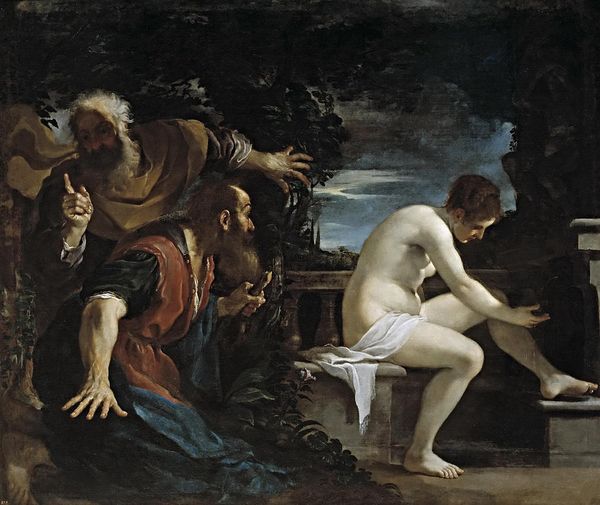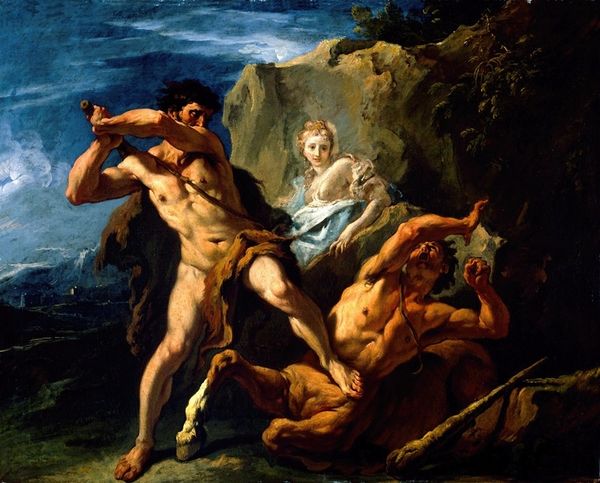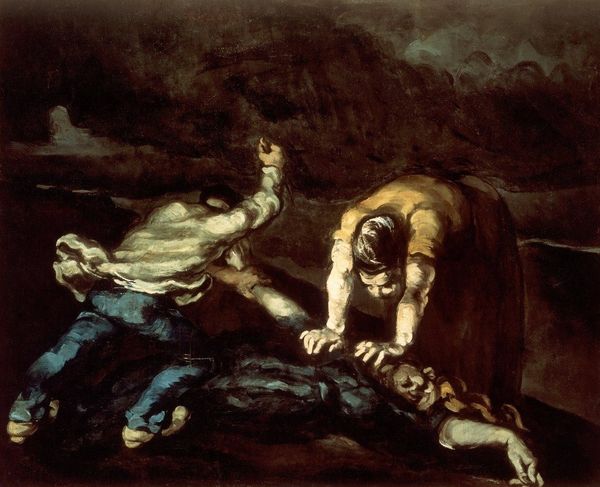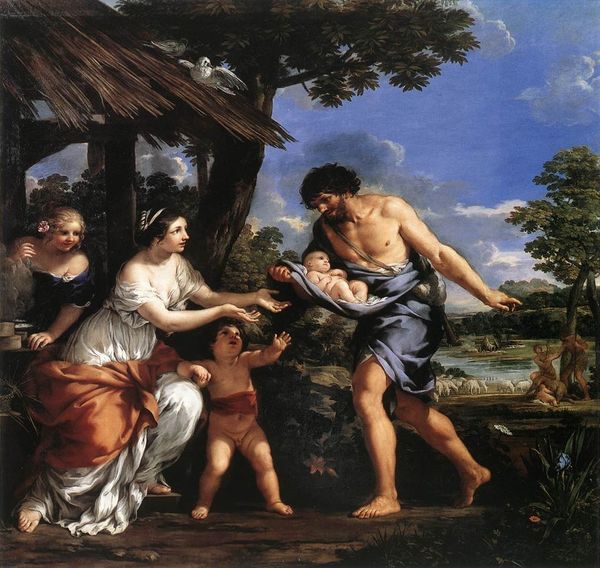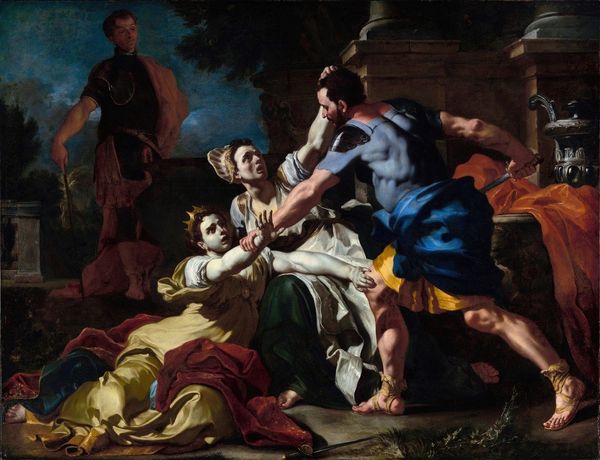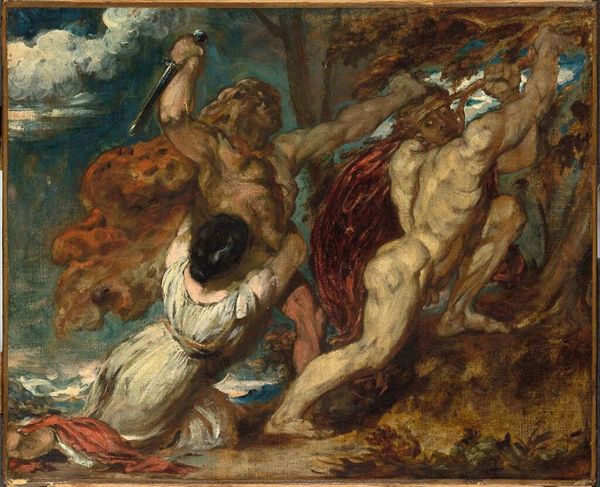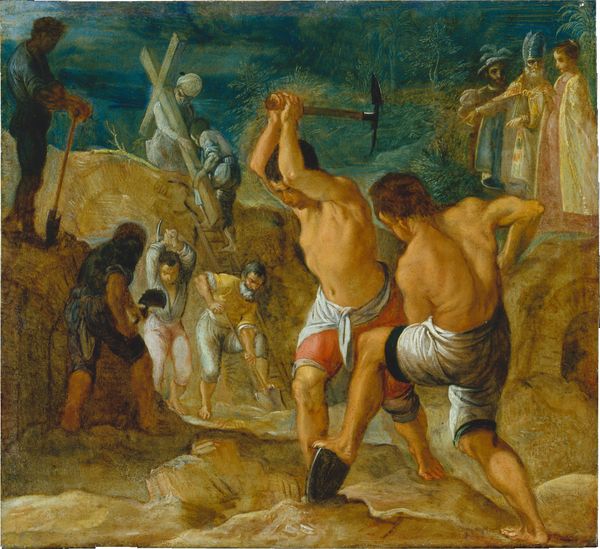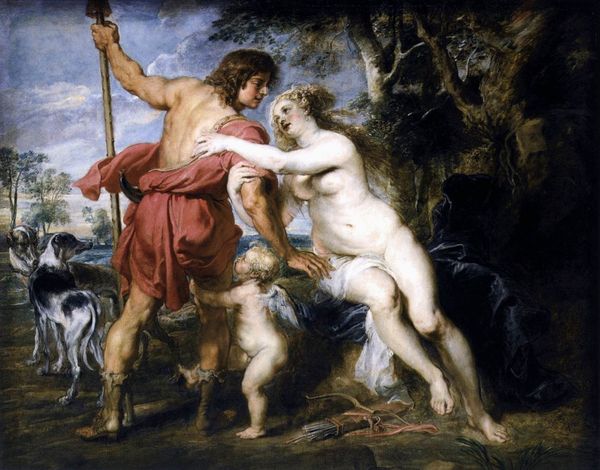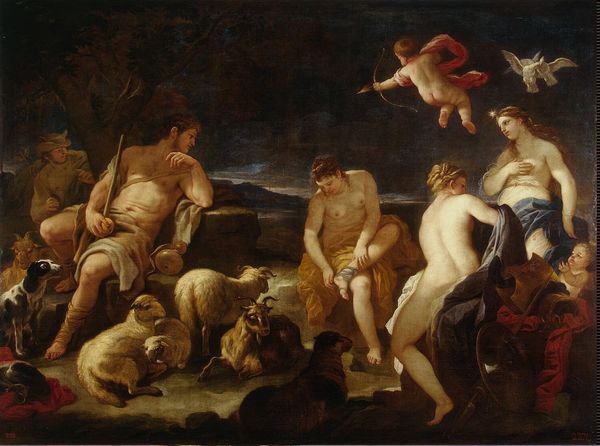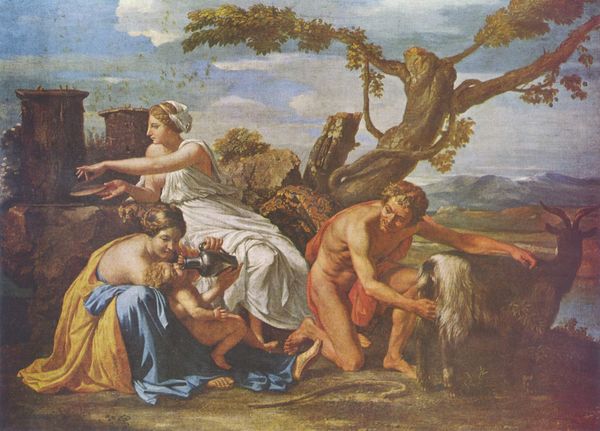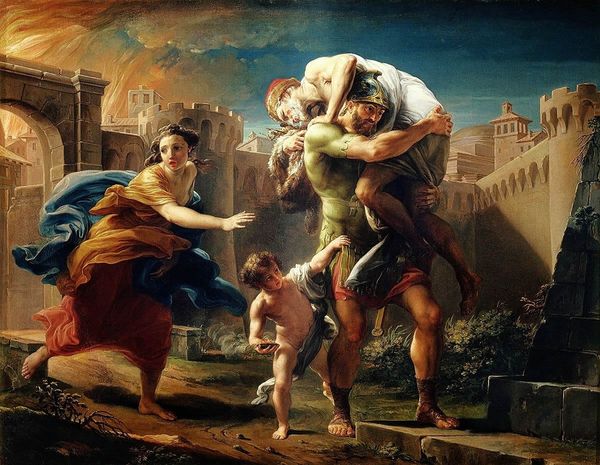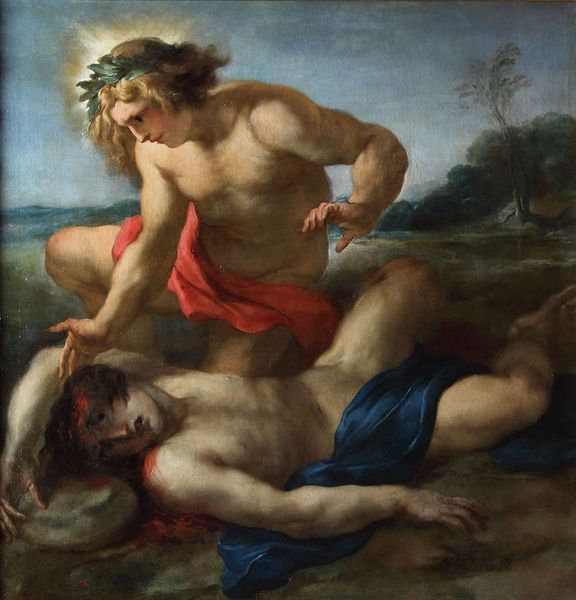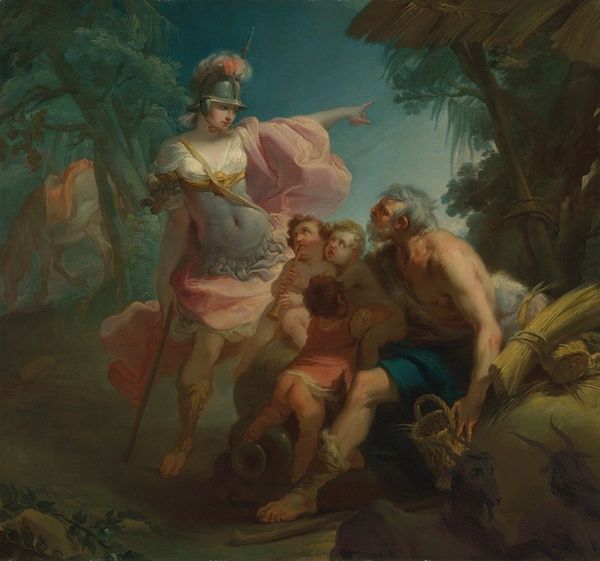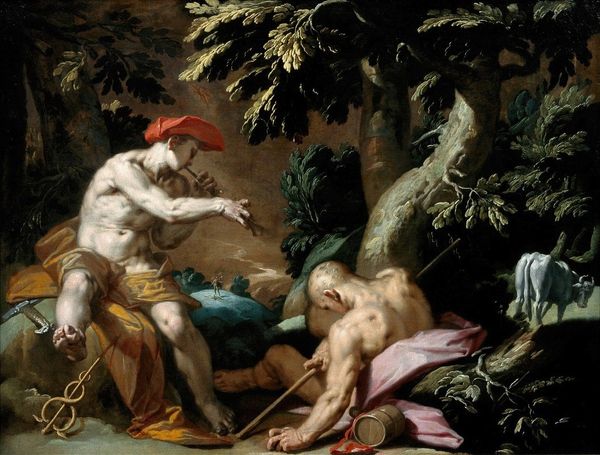
Dimensions: support: 655 x 645 mm frame: 730 x 720 x 72 mm
Copyright: CC-BY-NC-ND 4.0 DEED, Photo: Tate
Curator: Here we see Giacomo Amiconi’s rendition of “Mercury About to Slay Argus,” a scene rife with mythological symbolism. Editor: It strikes me as a study in contrasts; the vibrant, muscular Mercury and the limp, almost pitiful figure of Argus, all under this looming, stormy sky. Curator: Indeed. Mercury, sent by Jupiter, is about to end Argus, the hundred-eyed giant tasked with guarding Io, who Jupiter had transformed into a heifer to hide her from Juno’s wrath. Editor: So, the sleeping Argus represents patriarchal control, while Mercury's action is a rebellion against that structure? His triumph over Argus is then, in a sense, a liberation of female agency. Curator: I see it more as the triumph of divine will, the clever trickster overcoming brute force. Notice the dog mirroring Argus’s sleep; even nature is lulled into complacency. Editor: Interesting. It seems like the story still has the power to provoke discussion, even centuries later. Curator: Absolutely. And that is perhaps the greatest testament to the painting’s enduring appeal.
Comments
tate 7 months ago
⋮
http://www.tate.org.uk/art/artworks/amiconi-mercury-about-to-slay-argus-t01299
Join the conversation
Join millions of artists and users on Artera today and experience the ultimate creative platform.
tate 7 months ago
⋮
This is a sketch for one of four decorative canvases painted for the Hall at Moor Park, Hertfordshire. The series illustrates the story of Jupiter and Io from Ovid’s Metamorphoses. Jupiter seduced Io and changed her into a white heifer – on the left here – to hide his infidelity. But Jupiter’s wife Juno discovered the truth and sent Mercury, on the right, to kill her. Giacomo Amiconi was born in Venice and he worked in London from 1729-39. He became a successful portrait painter and a scenery designer at Covent Garden Theatre. Gallery label, May 2007
